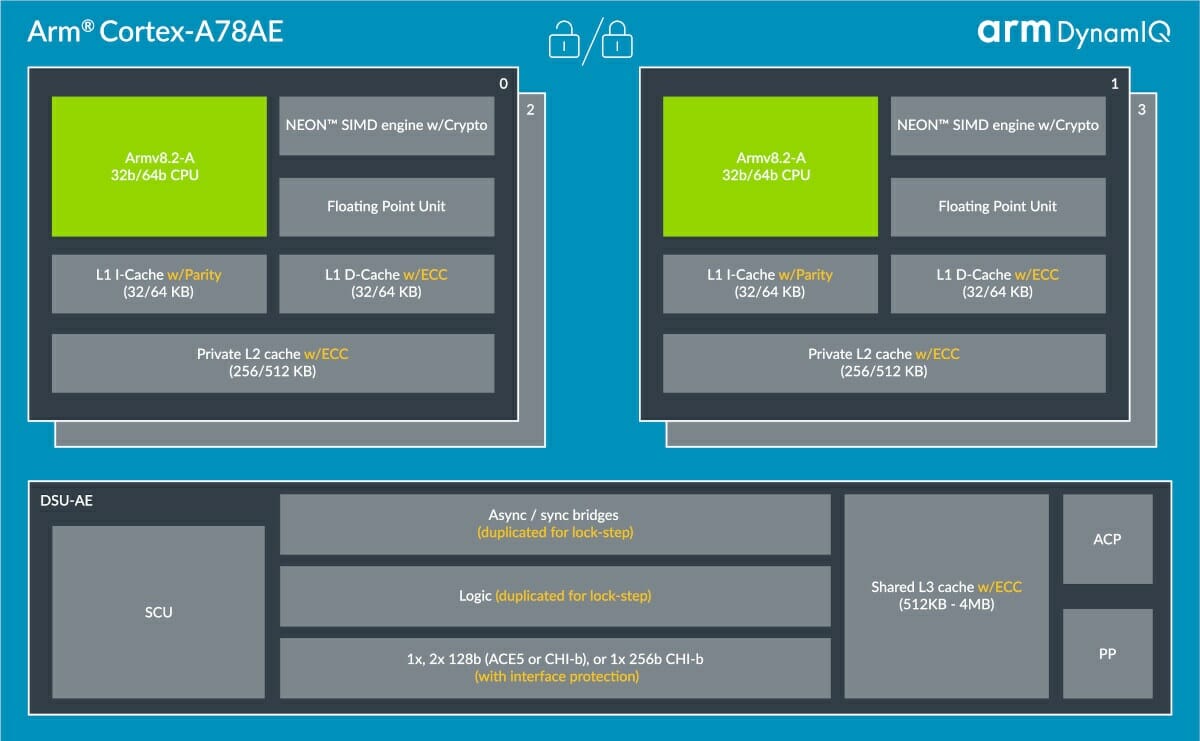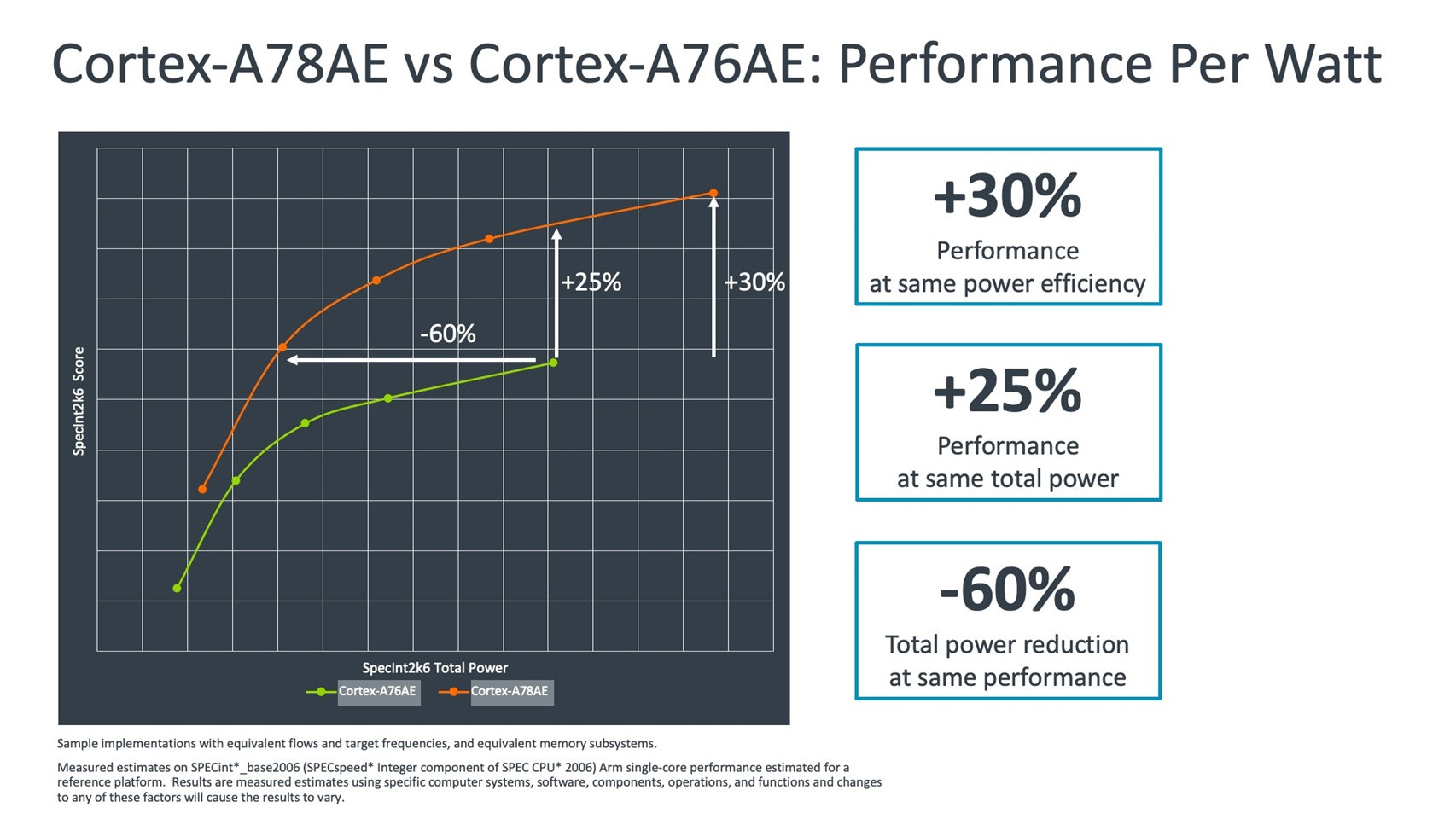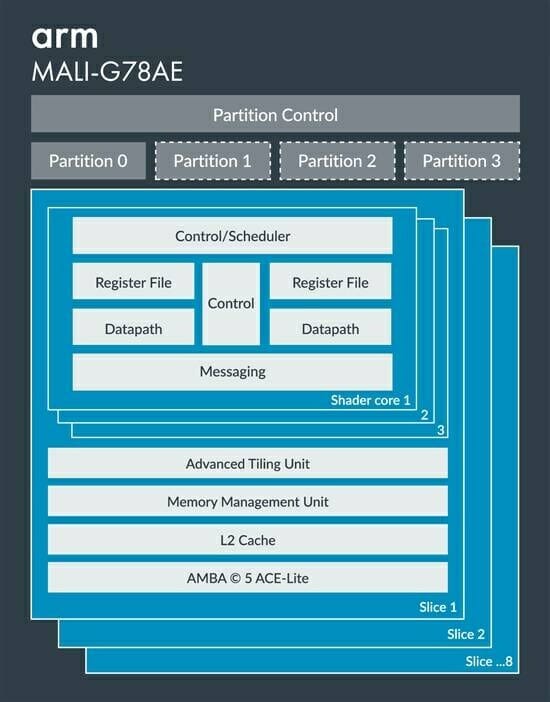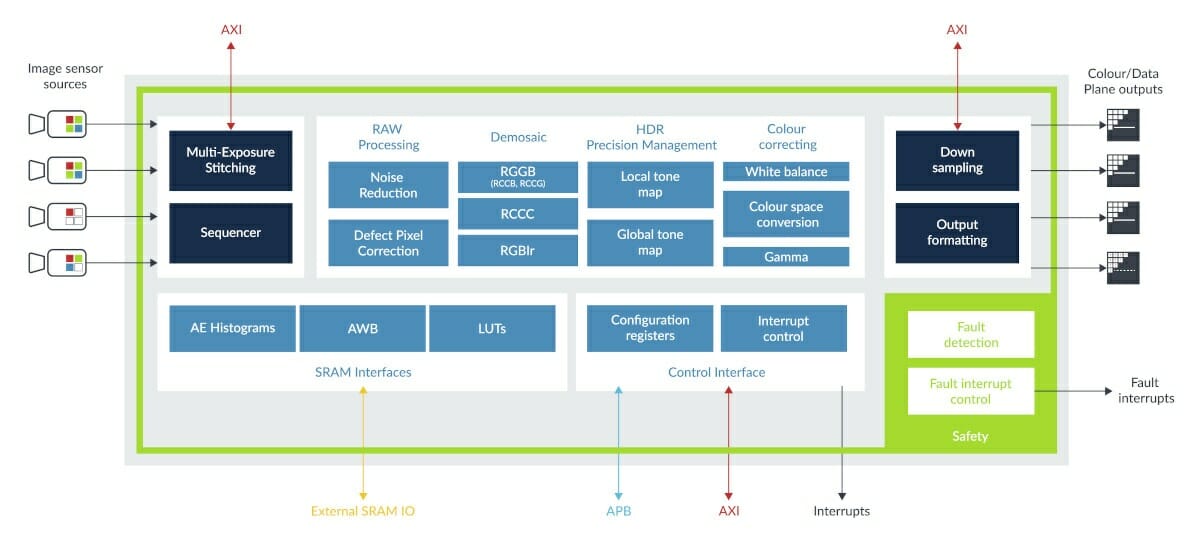Arm has announced new CPU, GPU, and ISP specifically designed for autonomous automotive and industrial applications with respectively Cortex-A78AE CPU, Arm Mali-G78AE GPU, and Arm Mali-C71AE ISP.
Arm Cortex-A78AE CPU
Key features and specifications:
- Architecture – Armv8.2-A (AArch32 at ELO only)
- Extensions – Armv8.1, Armv8.2, and Armv8.3 extensions (LDAPR instructions only), RAS extensions, Armv8.4 Dot Product, Cryptography extensions, RAS extensions
- Microarchitecture
- Up to 4x CPU cores per cluster
- Out of order pipeline
- Neon / Floating Point Unit included with INT8 Dot Product and IEEE FP16
- Optional Cryptography Unit
- 48-bit Physical Addressing (PA)
- Memory system and external interfaces
- 32kB to 64kB L1 I-Cache / D-Cache
- 256kB to 512kB L2 Cache
- Optional 512kB to 4MB L3 Cache
- ECC Support
- LPAE
- Bus interfaces – AMBA ACE or CHI
- Optional ACP, peripheral port
- Functional Safety Support – ASIL D Systematic1 and ASIL D Diagnostic2
- Security – TrustZone
- Interrupts – External GICv4
- Generic timer – Armv8-A
- Non-intrusive debug (trace)
Cortex-A78AE succeeds Cortex-A76AE processors and delivers 30% performance improvement at the same power efficiency, 25% increased performance at the same total power, or 60% reduction in power at the same performance level.
Cortex-A78AE supports DynamIQ, and the high-performance cores would typically be paired with Cortex-A65AE low-power cores in an automotive SoC. You’ll find more details on the developer page, and Arm community’s blog post.
Arm Mali-G78AE GPU
Mali-G78EU is the very first autonomous/automotive GPU with from the company, is designed for functional safety, and offers the following key features:
- Configurable from 1 to 24 cores
- Anti-aliasing – 4x/8x/16x MSAA (Multi-Sampling Anti-Aliasing)
- API support
- OpenGL ES 1.1, 2.0, 3.1, 3.2
- Vulkan 1.1, 1.2
- OpenCL 1.1, 1.2, 2.0 Full profile
- OpenGL SC 1.0, 2.0
- Bus interface – AMBA 5 ACE, ACE-LITE, and AXI
- L2 cache – Configurable 256KB – 4MB
- Adaptive Scalable Texture Compression (ASTC) – Low Dynamic Range (LDR) and High Dynamic Range (HDR); supports both 2D and 3D images.
- Arm Frame Buffer Compression (AFBC) – Version 1.3
The GPU supports automotive and industrial safety standards to help manufacturers meet ASIL B / SIL 2 requirements, and adds features like Flexible Partitioning and virtualization to isolate various graphics & compute tasks and increase reliability.
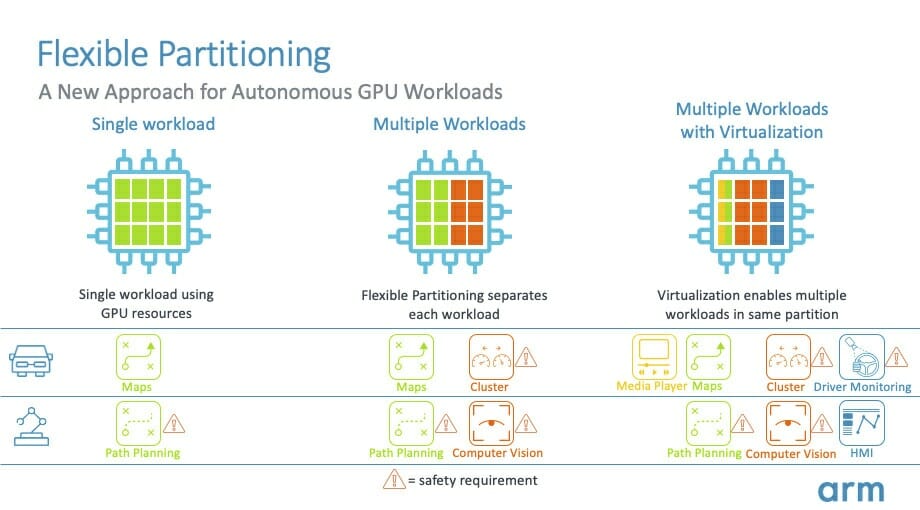
Again you’ll find more details both on Arm’s developer page and corresponding blog post.
Arm Mali-C71AE ISP
Autonomous vehicles and robots requires penty of camera inputs, so it makes perfect sense for Arm to introduce the Mali-C71AE Image Signal Processor (ISP) with support for up to four real-time cameras or 16 buffered cameras with a total throughput of 1.2 GP/s (Giga pixel per second).
The ISP also supports advanced spatial (2D) noise reduction (“Sinter”),per-exposure noise profiling andchromaticaberration correction,integrates 400 fault-detection circuits to make sure data is reliable, and provides supports for independent dynamic range management both for optimum human vision (display) and forcomputer vision (CV)applications. More in-depth information about Mali-C71AE ISP can be found in the announcement’s post.
The new Arm Mali-78AE processor, Mali-G78AE GPU and Mali-C71AE ISP should soon be found in SoCs used in applications when functional safety is critcal from smart manufacturing to enhancing ADAS and digital cockpit applications in automotive.

Jean-Luc started CNX Software in 2010 as a part-time endeavor, before quitting his job as a software engineering manager, and starting to write daily news, and reviews full time later in 2011.
Support CNX Software! Donate via cryptocurrencies, become a Patron on Patreon, or purchase goods on Amazon or Aliexpress


